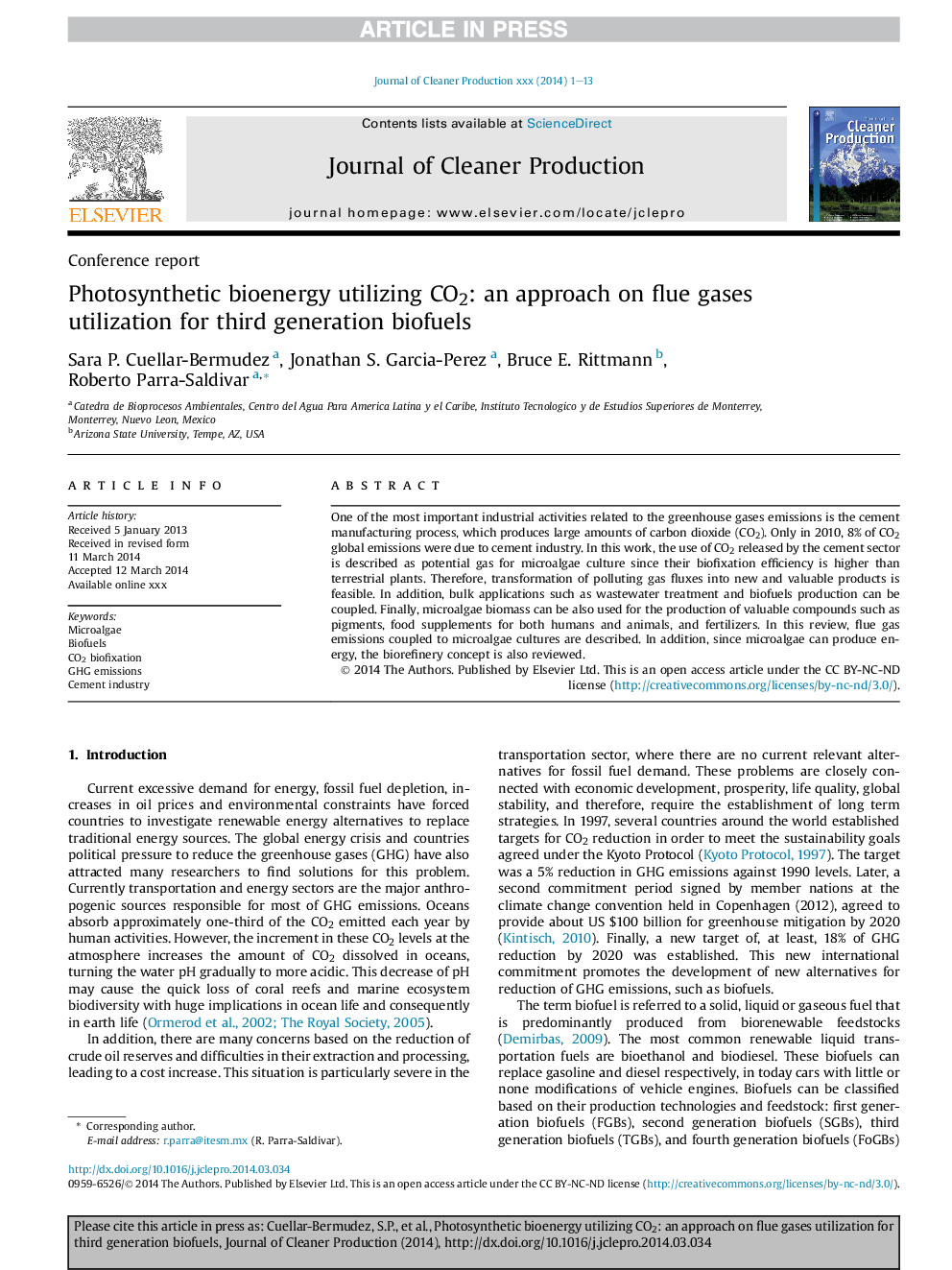| Article ID | Journal | Published Year | Pages | File Type |
|---|---|---|---|---|
| 8104186 | Journal of Cleaner Production | 2015 | 13 Pages |
Abstract
One of the most important industrial activities related to the greenhouse gases emissions is the cement manufacturing process, which produces large amounts of carbon dioxide (CO2). Only in 2010, 8% of CO2 global emissions were due to cement industry. In this work, the use of CO2 released by the cement sector is described as potential gas for microalgae culture since their biofixation efficiency is higher than terrestrial plants. Therefore, transformation of polluting gas fluxes into new and valuable products is feasible. In addition, bulk applications such as wastewater treatment and biofuels production can be coupled. Finally, microalgae biomass can be also used for the production of valuable compounds such as pigments, food supplements for both humans and animals, and fertilizers. In this review, flue gas emissions coupled to microalgae cultures are described. In addition, since microalgae can produce energy, the biorefinery concept is also reviewed.
Related Topics
Physical Sciences and Engineering
Energy
Renewable Energy, Sustainability and the Environment
Authors
Sara P. Cuellar-Bermudez, Jonathan S. Garcia-Perez, Bruce E. Rittmann, Roberto Parra-Saldivar,
